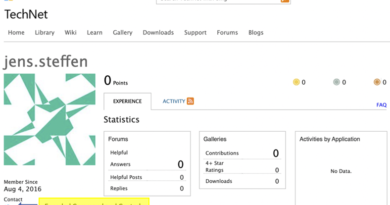Why CISOs Are Demanding Detection and Response Everywhere

Over the past three decades, we’ve had time at Trend Micro to observe the industry trends that have the biggest impact on our customers. And one of the big things we’ve seen is that threats move largely in tandem with changes to IT infrastructure. This matters today because most organizations are transforming the way they run and manage their infrastructure—a daunting task on its own.
But with digital transformation also comes an expanded corporate attack surface, driving security leaders to demand enhanced visibility, detection & response across the entire enterprise — this is not just about the endpoint.
Transforming business
Over the past five years, there has been a major shift in the way IT infrastructure is delivered, and with that shift, increasing complexity. A big part of this change has been the use of the cloud, reflected in Gartner’s prediction that the market will grow to over $266 billion in 2020. Organizations everywhere are leveraging the cloud and DevOps to rapidly deliver new and differentiated applications and services for their customers, partners and employees. And the use of containers and microservices across a multi-cloud and hybrid environment is increasingly common.
In addition to leveraging public cloud services like IaaS, organizations are also rapidly adopting SaaS applications like Office 365, and expanding their use of mobile and collaborative applications to support remote working. Some are even arguing that working patterns may never be the same again, following the changes forced on many employers by the Covid-19 pandemic.
Combine these changes with networks that continue to extend to include branch offices and add new areas to protect like operational technology including industrial systems, and we can certainly see that the challenges facing the modern enterprise look nothing like they did a few years ago.
Under fire, under pressure
All of these infrastructure changes make for a broader attack surface that the bad guys can take advantage of, and they’re doing so with an increasingly wide range of tools and techniques. In the cloud there is a new class of vulnerabilities introduced through a greater use of open source, containers, orchestration platforms, supply chain applications and more. For all organizations, the majority of threats still prey upon the user, arriving via email (over 90% of the 52.3 billion we blocked in 2019), and they’re no longer just basic phishing attempts. There’s been an uptick in fileless events designed to bypass traditional security filters (we blocked 1.4 million last year). And Business Email Compromise (BEC) and ransomware continue to evolve, the latter causing major outages across local government, healthcare and other vulnerable sectors.
Organizations are often left flat-footed because they don’t have the in-house skills to secure a rapidly evolving IT environment. Mistakes get made, and configuration errors can allow the hackers to sneak in.
Against this backdrop, CISOs need visibility, detection and response capabilities across the extended enterprise. But in too many cases, teams are struggling because they have:
|
|
Beyond the endpoint
While endpoint detection and response (EDR) has become a popular response to some of these problems over recent years, the reality is that cyber-attacks are rarely straightforward and limited to the endpoint (as noted in the email statistic above). Security teams actually need visibility, detection, and response across the entire IT environment, so they can better contextualize and deal with threats.
This is what Trend Micro XDR offers. It provides visibility across not just endpoints but also email, servers, cloud workloads and networks, applying AI and expert security analytics to correlate and identify potential threats. The result is fewer, higher fidelity alerts for stretched IT security teams to deal with. Recognizing the skills shortage reality, we also offer a managed XDR service that augments in-house SOC activities with the power of Trend Micro security experts.
Detection and response is too important to be limited to the endpoint. Today’s CISOs need visibility, detection, and response everywhere.
Read More HERE




